Jeep Compass vs Suzuki S-Cross – Which car suits you better?
Compare performance, boot capacity, efficiency and price at a glance.
Find out which car is the better choice for you – Jeep Compass or Suzuki S-Cross?
Costs and Efficiency:
When it comes to price and running costs, the biggest differences usually appear. This is often where you see which car fits your budget better in the long run.
Suzuki S-Cross has a significantly advantage in terms of price – it starts at 21800 £, while the Jeep Compass costs 34200 £. That’s a price difference of around 12438 £.
Fuel consumption also shows a difference: Jeep Compass manages with 2 L and is therefore clearly more efficient than the Suzuki S-Cross with 5.10 L. The difference is about 3.10 L per 100 km.
Engine and Performance:
Power, torque and acceleration are the classic benchmarks for car enthusiasts – and here, some clear differences start to show.
When it comes to engine power, the Jeep Compass has a decisively edge – offering 240 HP compared to 129 HP. That’s roughly 111 HP more horsepower.
In acceleration from 0 to 100 km/h, the Jeep Compass is clearly perceptible quicker – completing the sprint in 7.30 s, while the Suzuki S-Cross takes 9.50 s. That’s about 2.20 s faster.
In terms of top speed, the Jeep Compass performs minimal better – reaching 200 km/h, while the Suzuki S-Cross tops out at 195 km/h. The difference is around 5 km/h.
There’s also a difference in torque: Jeep Compass pulls noticeable stronger with 345 Nm compared to 235 Nm. That’s about 110 Nm difference.
Space and Everyday Use:
Beyond pure performance, interior space and usability matter most in daily life. This is where you see which car is more practical and versatile.
Both vehicles offer seating for 5 people.
In curb weight, Suzuki S-Cross is evident lighter – 1280 kg compared to 1575 kg. The difference is around 295 kg.
In terms of boot space, the Jeep Compass offers distinct more room – 550 L compared to 430 L. That’s a difference of about 120 L.
In maximum load capacity, the Jeep Compass performs somewhat better – up to 1387 L, which is about 157 L more than the Suzuki S-Cross.
When it comes to payload, Jeep Compass a bit takes the win – 470 kg compared to 405 kg. That’s a difference of about 65 kg.
Who wins the race?
The Jeep Compass proves to be is largely superior and therefore becomes our DriveDuel Champion!
Jeep Compass is the better all-rounder in this comparison.
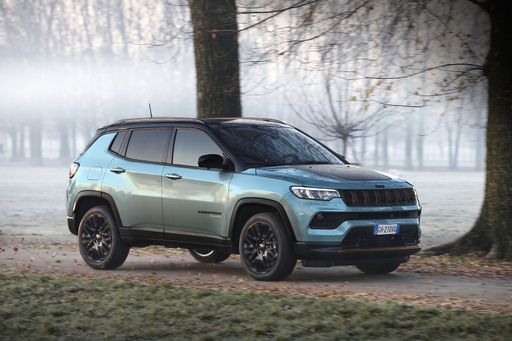
Jeep Compass
Jeep Compass
The Jeep Compass combines a rugged aesthetic with modern sophistication, making it a standout choice in the compact SUV segment. Its robust design is complemented by a comfortable interior that offers ample space and cutting-edge technology for a seamless driving experience. Whether tackling urban environments or venturing off-road, the Compass provides versatility and reliability, embodying the adventurous spirit synonymous with the Jeep brand.
details @ media.stellantis.com
@ media.stellantis.com
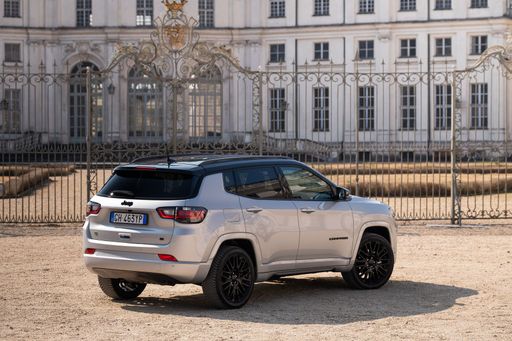 @ media.stellantis.com
@ media.stellantis.com
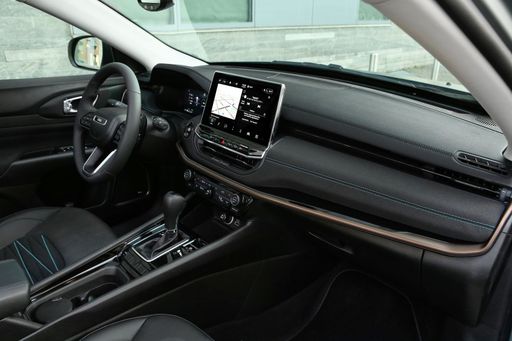 @ media.stellantis.com
@ media.stellantis.com
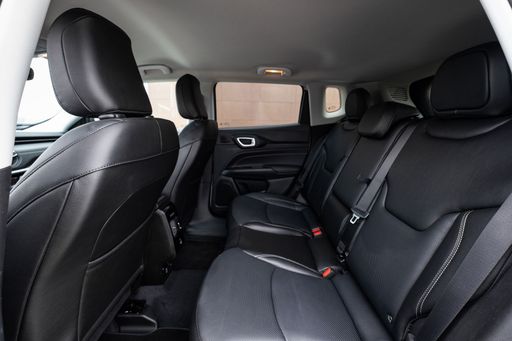 @ media.stellantis.com
@ media.stellantis.com
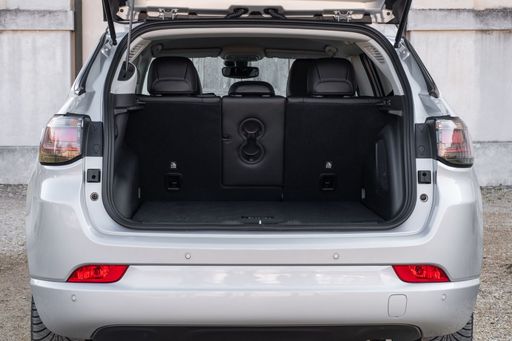 @ media.stellantis.com
@ media.stellantis.com
Suzuki S-Cross
The Suzuki S-Cross emerges as a versatile crossover, blending urban agility with a rugged presence suited for diverse terrains. Its design combines sleek, modern aesthetics with practicality, offering a spacious interior that comfortably accommodates passengers and cargo for varied journeys. Drivers will appreciate the advanced technology features that enhance both driving pleasure and safety, making the S-Cross a well-rounded option for those seeking reliability and style in a compact SUV.
details @ Suzuki
@ Suzuki
 @ Suzuki
@ Suzuki
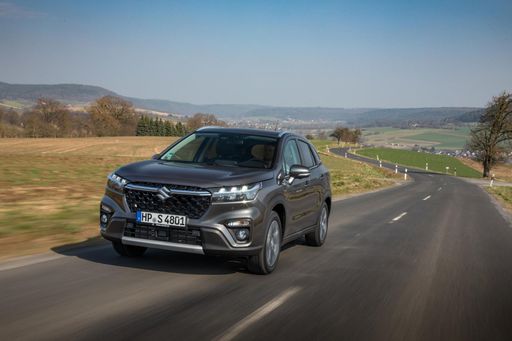 @ Suzuki
@ Suzuki
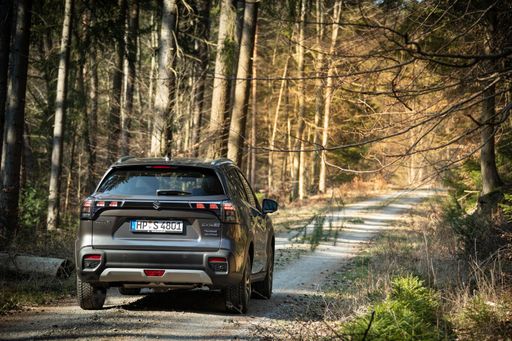 @ Suzuki
@ Suzuki
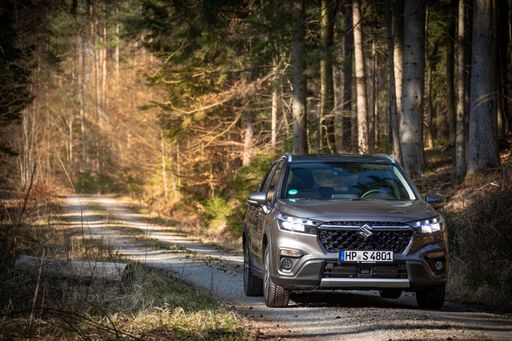 @ Suzuki
@ Suzuki
 @ Suzuki
@ Suzuki
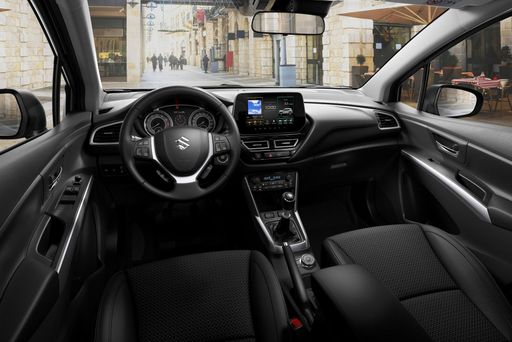 @ Suzuki
@ Suzuki

|

|
|
|
|
Costs and Consumption |
|
|---|---|
|
Price
34200 - 46900 £
|
Price
21800 - 33700 £
|
|
Consumption L/100km
2 - 5.9 L
|
Consumption L/100km
5.1 - 5.8 L
|
|
Consumption kWh/100km
17.50 kWh
|
Consumption kWh/100km
-
|
|
Electric Range
36 - 500 km
|
Electric Range
-
|
|
Battery Capacity
74 kWh
|
Battery Capacity
-
|
|
co2
0 - 133 g/km
|
co2
116 - 131 g/km
|
|
Fuel tank capacity
36 - 55 L
|
Fuel tank capacity
47 L
|
Dimensions and Body |
|
|---|---|
|
Body Type
SUV
|
Body Type
SUV
|
|
Seats
5
|
Seats
5
|
|
Doors
5
|
Doors
5
|
|
Curb weight
1575 - 2198 kg
|
Curb weight
1280 - 1435 kg
|
|
Trunk capacity
420 - 550 L
|
Trunk capacity
430 L
|
|
Length
4404 - 4552 mm
|
Length
4300 mm
|
|
Width
1819 mm
|
Width
1785 mm
|
|
Height
1629 - 1675 mm
|
Height
1580 mm
|
|
Max trunk capacity
1230 - 1387 L
|
Max trunk capacity
1230 L
|
|
Payload
465 - 470 kg
|
Payload
375 - 405 kg
|
Engine and Performance |
|
|---|---|
|
Engine Type
Petrol MHEV, Plugin Hybrid, Electric
|
Engine Type
Full Hybrid, Petrol MHEV
|
|
Transmission
Automatic
|
Transmission
Automatic, Manuel
|
|
Transmission Detail
Dual-Clutch Automatic, Automatic Gearbox, Reduction Gearbox
|
Transmission Detail
Automated Manual, Manual Gearbox
|
|
Drive Type
Front-Wheel Drive, All-Wheel Drive
|
Drive Type
Front-Wheel Drive, All-Wheel Drive
|
|
Power HP
130 - 240 HP
|
Power HP
116 - 129 HP
|
|
Acceleration 0-100km/h
7.3 - 10.3 s
|
Acceleration 0-100km/h
9.50 s
|
|
Max Speed
180 - 200 km/h
|
Max Speed
175 - 195 km/h
|
|
Torque
230 - 345 Nm
|
Torque
235 Nm
|
|
Number of Cylinders
4
|
Number of Cylinders
4
|
|
Power kW
96 - 177 kW
|
Power kW
85 - 95 kW
|
|
Engine capacity
1199 - 1469 cm3
|
Engine capacity
1373 - 1462 cm3
|
General |
|
|---|---|
|
Model Year
2024 - 2025
|
Model Year
2024
|
|
CO2 Efficiency Class
D, B, A
|
CO2 Efficiency Class
D
|
|
Brand
Jeep
|
Brand
Suzuki
|
What drivetrain options does the Jeep Compass have?
The Jeep Compass is available as Front-Wheel Drive or All-Wheel Drive.
The prices and data displayed are estimates based on German list prices and may vary by country. This information is not legally binding.
